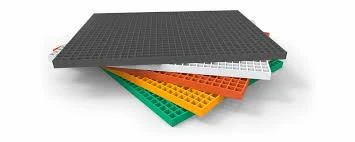
-
 Afrikaans
Afrikaans -
 Albanian
Albanian -
 Amharic
Amharic -
 Arabic
Arabic -
 Armenian
Armenian -
 Azerbaijani
Azerbaijani -
 Basque
Basque -
 Belarusian
Belarusian -
 Bengali
Bengali -
 Bosnian
Bosnian -
 Bulgarian
Bulgarian -
 Catalan
Catalan -
 Cebuano
Cebuano -
 China
China -
 China (Taiwan)
China (Taiwan) -
 Corsican
Corsican -
 Croatian
Croatian -
 Czech
Czech -
 Danish
Danish -
 Dutch
Dutch -
 English
English -
 Esperanto
Esperanto -
 Estonian
Estonian -
 Finnish
Finnish -
 French
French -
 Frisian
Frisian -
 Galician
Galician -
 Georgian
Georgian -
 German
German -
 Greek
Greek -
 Gujarati
Gujarati -
 Haitian Creole
Haitian Creole -
 hausa
hausa -
 hawaiian
hawaiian -
 Hebrew
Hebrew -
 Hindi
Hindi -
 Miao
Miao -
 Hungarian
Hungarian -
 Icelandic
Icelandic -
 igbo
igbo -
 Indonesian
Indonesian -
 irish
irish -
 Italian
Italian -
 Japanese
Japanese -
 Javanese
Javanese -
 Kannada
Kannada -
 kazakh
kazakh -
 Khmer
Khmer -
 Rwandese
Rwandese -
 Korean
Korean -
 Kurdish
Kurdish -
 Kyrgyz
Kyrgyz -
 Lao
Lao -
 Latin
Latin -
 Latvian
Latvian -
 Lithuanian
Lithuanian -
 Luxembourgish
Luxembourgish -
 Macedonian
Macedonian -
 Malgashi
Malgashi -
 Malay
Malay -
 Malayalam
Malayalam -
 Maltese
Maltese -
 Maori
Maori -
 Marathi
Marathi -
 Mongolian
Mongolian -
 Myanmar
Myanmar -
 Nepali
Nepali -
 Norwegian
Norwegian -
 Norwegian
Norwegian -
 Occitan
Occitan -
 Pashto
Pashto -
 Persian
Persian -
 Polish
Polish -
 Portuguese
Portuguese -
 Punjabi
Punjabi -
 Romanian
Romanian -
 Russian
Russian -
 Samoan
Samoan -
 Scottish Gaelic
Scottish Gaelic -
 Serbian
Serbian -
 Sesotho
Sesotho -
 Shona
Shona -
 Sindhi
Sindhi -
 Sinhala
Sinhala -
 Slovak
Slovak -
 Slovenian
Slovenian -
 Somali
Somali -
 Spanish
Spanish -
 Sundanese
Sundanese -
 Swahili
Swahili -
 Swedish
Swedish -
 Tagalog
Tagalog -
 Tajik
Tajik -
 Tamil
Tamil -
 Tatar
Tatar -
 Telugu
Telugu -
 Thai
Thai -
 Turkish
Turkish -
 Turkmen
Turkmen -
 Ukrainian
Ukrainian -
 Urdu
Urdu -
 Uighur
Uighur -
 Uzbek
Uzbek -
 Vietnamese
Vietnamese -
 Welsh
Welsh -
 Bantu
Bantu -
 Yiddish
Yiddish -
 Yoruba
Yoruba -
 Zulu
Zulu
Effective Solutions for Managing Moisture in FRP Applications
Understanding FRP Moisture Traps A Comprehensive Overview
Fiber-Reinforced Polymer (FRP) materials have gained significant traction in various industries due to their unique properties, such as high strength-to-weight ratios, corrosion resistance, and flexibility in design. However, one of the challenges that these materials face is moisture absorption, which can lead to various forms of degradation. Hence, the introduction of FRP moisture traps has become crucial in extending the lifespan and enhancing the performance of FRP components.
Understanding FRP Moisture Traps A Comprehensive Overview
One of the primary benefits of using FRP moisture traps is that they help maintain the mechanical properties of the polymer. When moisture is absorbed into the FRP matrix, it can lead to a reduction in tensile and flexural strength. In some cases, moisture intrusion can initiate a process known as hydrolysis, whereby the chemical bonds within the polymer are weakened. This can result in delamination, loss of structural integrity, and even failure of the component under load. By integrating moisture traps, we can effectively mitigate these risks, ensuring that the performance standards of the FRP material are upheld.
frp moisture trap

Additionally, moisture traps can significantly influence the thermal properties of FRP components. Moisture within a polymer matrix can act as a heat conductor, altering the thermal profile of the material over time. This change can affect the thermal expansion and contraction behavior of the FRP, potentially leading to warping or cracking due to differential thermal stresses. By utilizing moisture traps, we can ensure that the thermal characteristics of the FRP remain stable, thereby preserving its intended functionality and lifespan.
The design of moisture traps can vary based on the specific application, but they generally consist of hygroscopic materials or coatings that can effectively absorb and hold moisture. Common materials used for moisture traps include silica gel, zeolites, and various polymers engineered for enhanced moisture absorption. These materials are often incorporated into the FRP matrix during the manufacturing process, enabling a seamless integration that does not compromise the structural properties of the composite.
Moreover, it is important for engineers and designers to assess the environmental conditions and loading scenarios the FRP components will face. This assessment will guide the selection of appropriate moisture trap materials and their placement within the composite structure. For instance, in applications exposed to highly dynamic water flows, moisture traps may require specific configurations or sizes to maximize their efficiency.
In conclusion, FRP moisture traps play an essential role in the longevity and reliability of fiber-reinforced polymer materials. By actively managing moisture intrusion, these innovative solutions uphold the mechanical and thermal properties of FRP structures, ensuring they perform optimally even under challenging environmental conditions. With the growing reliance on FRP materials across various industries, the incorporation of effective moisture management strategies will become increasingly vital in safeguarding the integrity and durability of these advanced composites. As research and development in this field continue to evolve, we can expect even more efficient and effective moisture trap technologies to emerge, further enhancing the capabilities of FRP materials.
Latest news
-
Exploring the Benefits of Top Hammer Drifter Rods for Enhanced Drilling PerformanceNewsJun.10,2025
-
High-Precision Fiberglass Winding Machine for GRP/FRP Pipe Production – Reliable & Efficient SolutionsNewsJun.10,2025
-
FRP Pipes & Fittings for Shipbuilding - Corrosion-Resistant & LightweightNewsJun.09,2025
-
Premium FRP Flooring Solutions Durable & Slip-ResistantNewsJun.09,2025
-
Premium Fiberglass Rectangular Tanks Durable & Lightweight SolutionNewsJun.09,2025
-
Tapered Drill String Design Guide Durable Performance & UsesNewsJun.09,2025









